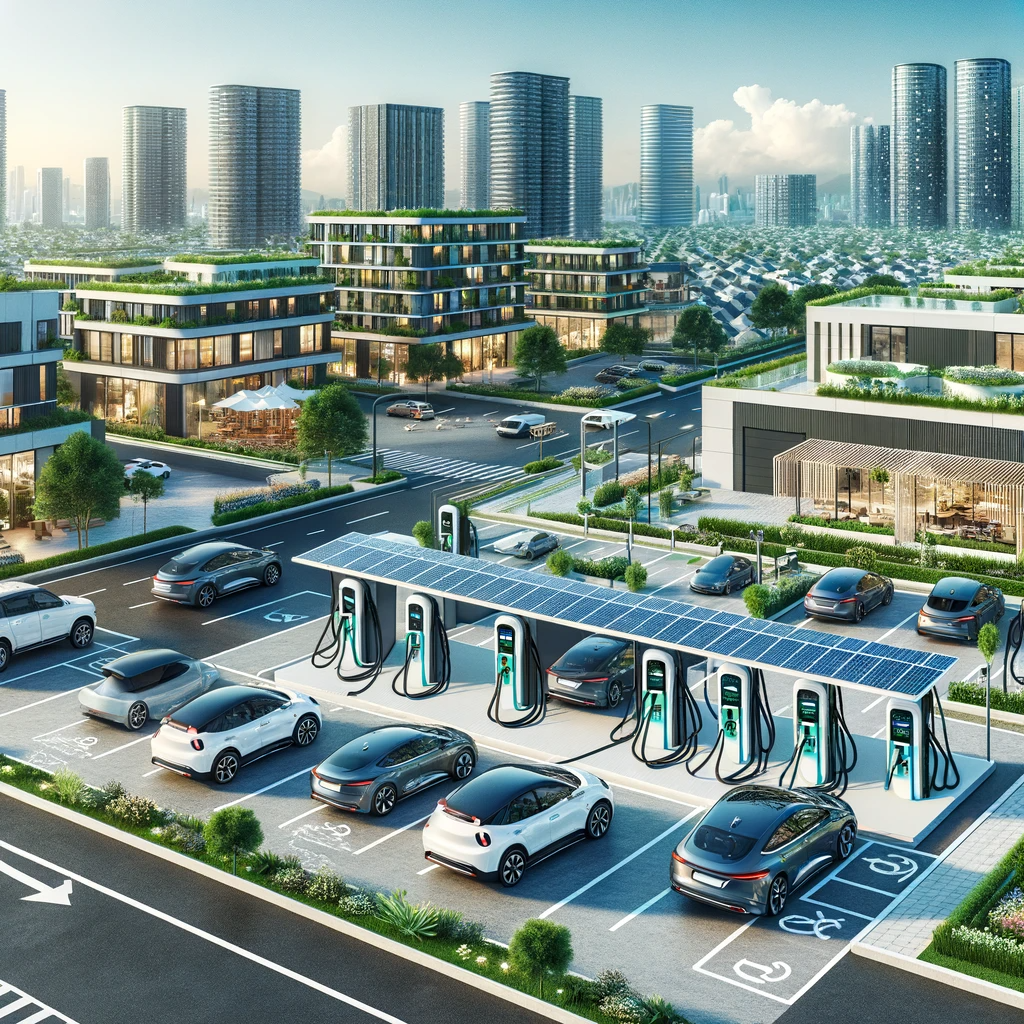As electric vehicles (EVs) become central to global efforts towards sustainable development, the spotlight turns to the charging infrastructure that powers them. An efficient, accessible, and reliable charging network is crucial for the widespread adoption of EVs, offering a seamless transition from fossil fuels to clean energy. This article explores the key considerations in developing charging infrastructure that supports the growth of electric mobility and fosters sustainable development.

The Backbone of Electric Mobility
Availability and Accessibility
The cornerstone of a robust EV infrastructure is the availability and accessibility of charging stations. Charging points must be strategically located to cover urban centers, residential areas, workplaces, and key travel corridors, ensuring drivers can recharge conveniently, wherever their journey takes them.
Speed and Efficiency
Charging time is a vital factor affecting EV user experience. The development of fast-charging stations, capable of delivering significant charge in minutes rather than hours, is pivotal in making EVs as convenient as their gasoline counterparts, if not more so.
Integration with Renewable Energy
For charging infrastructure to truly contribute to sustainable development, it must harness renewable energy sources. Solar-powered charging stations and grid connections to renewable sources minimize the carbon footprint of EV charging, aligning it with broader environmental goals.
Smart Charging and Grid Stability
As the number of EVs on the road grows, smart charging technology becomes essential to maintain grid stability. Smart chargers can adjust charging rates based on grid demand, vehicle requirements, and energy prices, optimizing energy use and preventing grid overload.
Scalability and Future-Proofing
The charging infrastructure must not only meet today’s needs but also anticipate future growth. Investing in scalable solutions and adaptable technologies ensures the network can expand in line with increasing EV adoption and advancements in vehicle technology.
Urban Planning and Policy Support
The integration of EV charging infrastructure into urban planning is critical. Policies and incentives that encourage the installation of private and public charging stations can accelerate infrastructure development, making electric mobility a viable option for more people.
Equity and Inclusion
Ensuring equitable access to charging infrastructure is a key consideration in sustainable development. Initiatives to expand charging networks in underserved areas and incentives for multi-unit dwellings to install chargers can help democratize EV ownership.
Public-Private Partnerships
Collaboration between governments, private companies, and utility providers is crucial for building comprehensive charging networks. Public-private partnerships can leverage the strengths of each sector to develop infrastructure that is both extensive and efficient.
Education and Awareness
Educating consumers about the availability, use, and benefits of EV charging infrastructure is essential to increase EV adoption. Clear signage, user-friendly interfaces, and outreach programs can help demystify EV charging for the general public.
Conclusion
The development of charging infrastructure is a linchpin in the transition to electric mobility and a cornerstone of sustainable development. By addressing considerations such as accessibility, integration with renewable energy, smart charging, and inclusivity, we can build a charging network that supports the widespread adoption of electric vehicles. As we power ahead with innovations in charging technology and infrastructure, the vision of a sustainable, electric-powered transportation system becomes ever more attainable.
